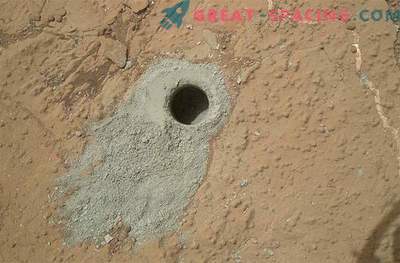
Acid flow in Cape Dungy Head, Lulworth Bay in the eastern part of St Osvalds Bay
Researchers at Imperial College London have identified traces of fatty acids (key building blocks of biological cells) in the acid streams of Dorset. They report that because of the similarity of acidic currents in Dorset and Mars, the findings may hint at the presence of life on the Red Planet.
If we apply the findings to Mars, then on the planet there may be almost 12,000 pools of Olympic-size organic matter, which may represent traces of past life. Dorset is home to the highly acidic streams of sulfur in which bacteria are found that thrive in extreme conditions. One such environment in the Gulf of St. Osvalds simulates Martian conditions billions of years ago.
Scientists viewed the landscape as a pattern on Mars and studied organic matter stored in mountain deposits nearby. Iron-rich mineral goethite turns into hematite, which is extremely common on the Red Planet and gives it red color. If these minerals contain traces of life on Earth, they can point to the past microbial life of Mars. If all these conclusions are applied to the Martian situation, then up to 2.86 x 10 10 kg of fatty acids may be present in the Martian rocks, which is equivalent to 12000 pools of Olympic parameters.
Previous life-search missions used heat to study the rock and the presence of organic matter. Researchers suspect that heat could cause minerals to react with any organic matter, which explains why we still haven't found signs of life.
St Osvalds Bay is a valuable place to explore because it reflects the situation on ancient Mars. As it dries, acid streams leave goethite minerals, behind which fatty acids are stored, which act as biological signatures. Researchers say that if we find traces of life, then it will probably be represented by bacteria that thrive in extreme conditions.











































